I actually wouldn’t mind a world where every logo had to be produced using Helvetica. A vision put to the test here.


I actually wouldn’t mind a world where every logo had to be produced using Helvetica. A vision put to the test here.


It’s surprising how many of these apply…

The XKCD man, Randall Munroe, conducted a big survey on colour identification and gender. He found that the difference between men and women on colour recognition has been greatly exaggerated.
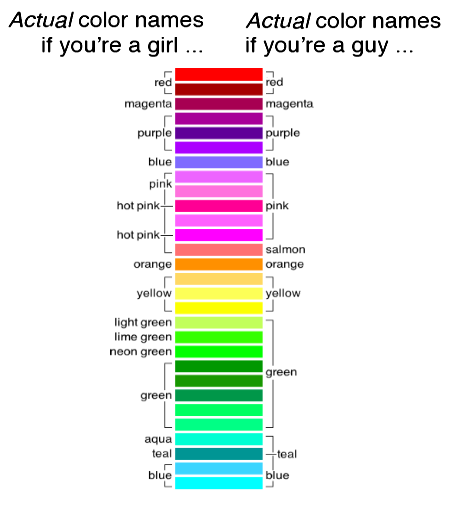
Contrary to this DogHouse Diaries Comic:
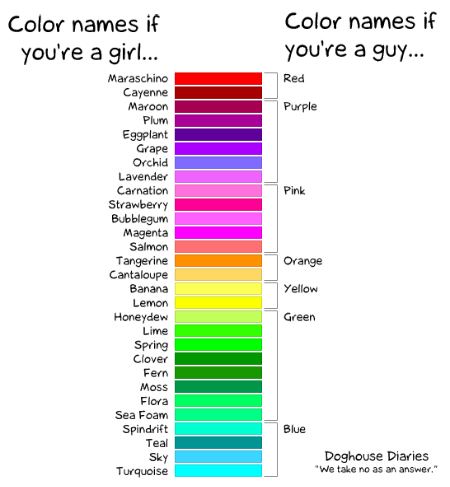
He also gives a nice guide to common colours and their hex codes based on the survey results.
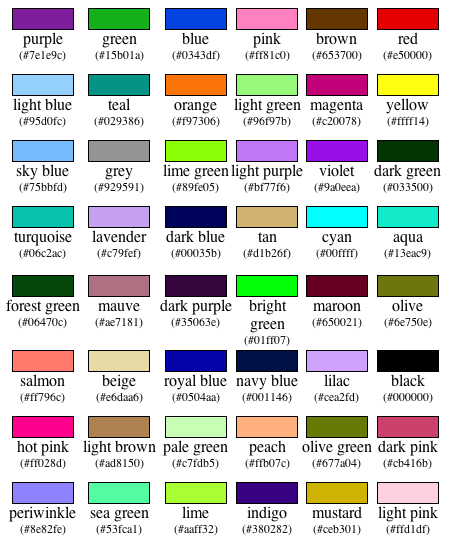
He created a colour map too, which is helpful for colourblind people like me.
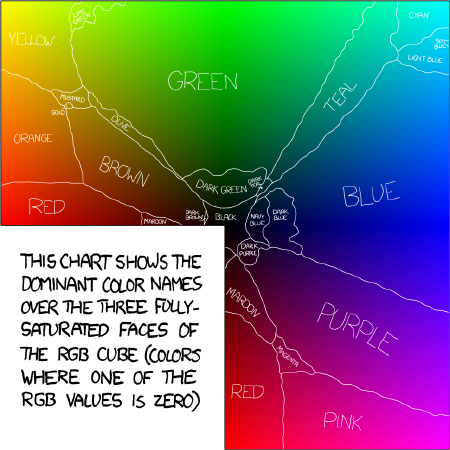
A journalist has been researching cliches. Which might sound a bit like a cigarette company researching the harm caused by nicotine. But this journo, Chris Pash, came up with the following as the most (over)used cliches in journalism…
1. At the end of the day
2. Split second
3. About face
4. Unsung heroes
5. Outpouring of support
6. Last-ditch effort
7. Concerned residents
He also makes this statement:
Writers in particular genres tend to reach for particular cliches. Book reviewers, for example, favour “compelling” and “masterful”as well as the made-up word “unputdownable”, whereas travel writers show an over-dependence on “paradise”, “must-see” and “best-kept secret”.
Which is true for any profession. We’ve all got our own jargon and favourite terminology. One of my favourite media release cliches was “key strategy” – which is both weaselly, buzzwordy, and slightly tautologous. Perfect cliche fodder. It almost always came with the modifier “one of our” (and the accompanying pluralisation of strategy) – just to show that we weren’t nailed down to a single idea.
Pash manages the Dow Jones Factiva Database, which stores all the content from about 25,000 major news outlets and magazines. He ran searches on the material for particular phrases, like “at the end of the day” and identified the list above as the most commonly used cliches.
But, at the end of the day, nobody really needs to write “at the end of the day” do they?
Pash attributes the soul-crushing dominance of “at the end of the day” at least partly to its frequent appearance in direct quotes, particularly those given by politicians. “They use it almost as punctuation,” he says.
Being aware of the cliches you use is good. Because cliches make for tired writing, and thus, bad communication. As soon as a phrase becomes a cliche it has lost its magic.
I like you readers. XKCD says I have to… they are a little cynical though, they think I want to make money out of blogging.
The Alt/title text of the image says: “I’m looking to virally monetize your eyeballs by selling them for transplants.”
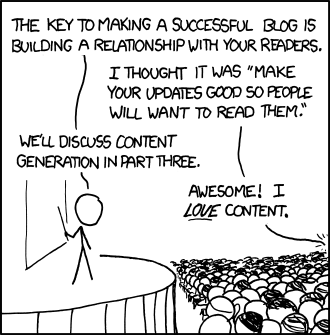
I’m not out to make any dollars from blogging. In fact, it costs me money. But you can buy this shirt:
Or some coffee.
Not really all that funny unless you happen to be a Colbert fan who knows a bit about American television. I know I’m a day late. But essay due dates wait for no man…
Any website designers or aspiring dotcom millionaires out there. Listen up. The Oatmeal speaks…



The rest are here…
This is simultaneously helpful and unhelpful. Given that we believe “I’ll pray for you” actually is a method for caring for people that particular critique is mostly unfounded (though “I’ll pray for you” with no offer of physical help does smack of hypocrisy).
What do you reckon? And are there other phrases we should reconsider?
I found a new blog yesterday. Technology is a wonderful thing. Luke is another Taswegian. He mentioned one of my posts on Twitter (creating a trackback) and I found his blog, Post-Apocalyptic Theology.
It looks good. Taswegians make good blogs. There are some interesting posts there to mull over.
I like this one in which he asks:
“I wonder what are the smallest/standard units of communication in our culture and what are smallest/standard units the bible intends us to begin with, use and apply?”
In response to this post, which argues that we should never read a verse in isolation…
“I use this simple rule to help me answer the majority of Bible questions I’m asked, even when I’m totally unfamiliar with the verse. It’s an amazingly effective technique you can use, too.
I read the paragraph, not just the verse. I take stock of the relevant material above and below. Since the context frames the verse and gives it specific meaning, I let it tell me what’s going on.
This works because of a basic rule of all communication: Meaning always flows from the top down, from the larger units to the smaller units, not the other way around. The key to the meaning of any verse comes from the paragraph, not just from the individual words.
I posted this response to his question…
I reckon individual words are the base both culturally and theologically. But only because there are certain “heavy” words that are capable of carrying huge amounts of meaning. One word can summarise a thousand words… like calling God “father”.
Plus I’m on his blogroll – so that’s cool. Am I on yours without knowing it? Tell me people. Affirm me…
A font flow chart for every occasion – though it doesn’t include Helvetica. Sadface. Click to make bigger.
Via Lifehacker.
Update – as Gav points out, Helvetica is there. I just missed it.
I’ve never written more than a chapter of fiction (I have about 20 first chapters though if anybody wants to buy some). I always get stuck on giving good names to characters. Plot devices aren’t all that hard, there are only six plots afterall, and a limited number of twists. And character development (except for the elusive name) doesn’t phase me. The final piece of the writing puzzle is reaching an audience. You do this by being popular. Here’s a quick guide to popularity from XKCD.
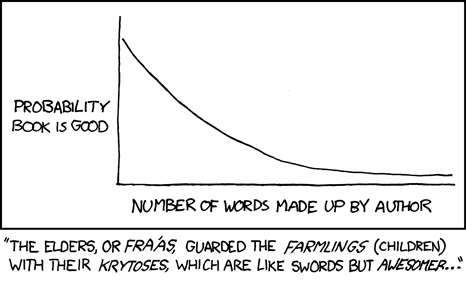
Tolkien, Shakespeare and Lewis Carroll get an exemption in the alt text.
IntenseDebate
So I’ve been using IntenseDebate for my comments for a while now. And while it allows cool features like giving you the ability to post YouTube Videos and pictures, to log in using various online accounts (like Facebook or Twitter) or as a guest, a pretty good spam filter, and the ability to vote comments up or down – it can be a little bit slow and annoying.Plus, nobody uses those features anyway.
I’m thinking about canning it. What do you reckon? If you’re hanging around wishing you could comment but put off by complexity just “like” this post and I’ll assume that’s your indication that I should kill the system.
While you’re telling me what you think of that system feel free to raise any other things that annoy you about the design or technology behind this blog… I’m always interested in fixing those issues because it gives me a chance to play with code and design stuff.
Over to you.
April 28, 2010